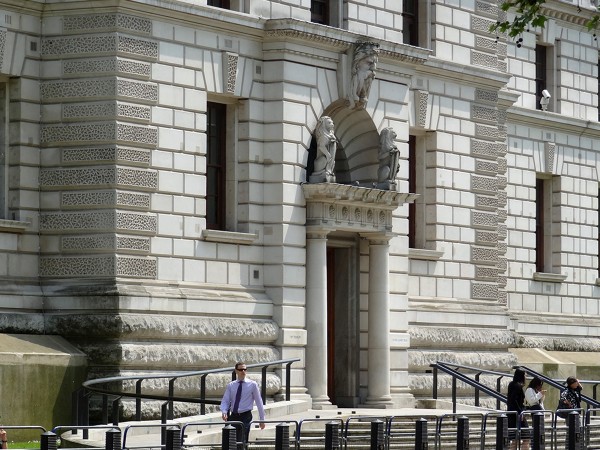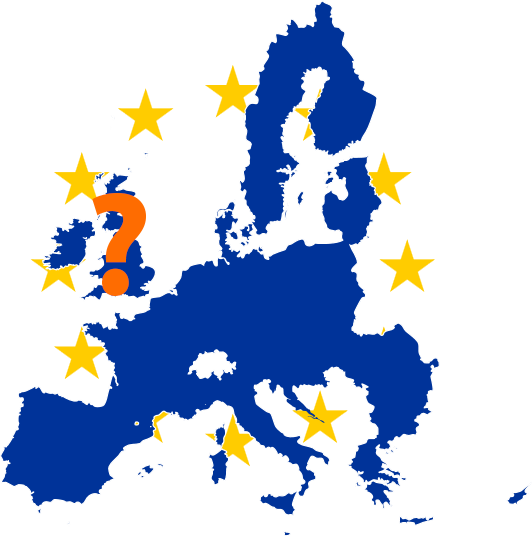Brexit costs
 The Treasury has published a paper analysing the costs of Britain leaving the EU. Its central assumption is that the UK would negotiate a bilateral trade deal with the EU similar to that between Canada and the EU. Under this assumption the Treasury estimates that, by 2030, GDP would be 6.2% lower than if the UK had remained in the EU, meaning that the average household would be £4300 per year worse off than it would otherwise have been. The analysis also finds that there would be a total reduction in tax receipts of £36 billion per year – far greater than any savings from lower contributions to the EU budget.
The Treasury has published a paper analysing the costs of Britain leaving the EU. Its central assumption is that the UK would negotiate a bilateral trade deal with the EU similar to that between Canada and the EU. Under this assumption the Treasury estimates that, by 2030, GDP would be 6.2% lower than if the UK had remained in the EU, meaning that the average household would be £4300 per year worse off than it would otherwise have been. The analysis also finds that there would be a total reduction in tax receipts of £36 billion per year – far greater than any savings from lower contributions to the EU budget.
Not surprisingly the ‘Vote Remain’ campaign for the UK to stay in the EU has welcomed the analysis, seeing it as strong evidence in support of their case. Also, not surprisingly, the Vote Leave campaign has questioned both the analysis and the assumptions on which it is based.
 The Treasury analysis looks at three possible scenarios: (a) a Canada-style bilateral arrangement (the central estimate); (b) the UK becoming a member or the European Economic Area – the ‘Norwegian model’ (according to the Treasury, this would reduce GDP by 3.8%); (c) no specific deal with the EU, with the UK simply having the same access to the EU as any other country that is a mamber of the WTO (this would reduce GDP by 7.5%). Thus the Norwegian model would probably result in a smaller reduction in growth, but the UK would still continue to make contributions to the EU budget and have to allow free movement of labour. Only in option (c) would it have total control over migration. Each of the estimates has a margin of error, giving a range for the reduction in GDP across the three scenarios from 3.4% to 9.5%.
The Treasury analysis looks at three possible scenarios: (a) a Canada-style bilateral arrangement (the central estimate); (b) the UK becoming a member or the European Economic Area – the ‘Norwegian model’ (according to the Treasury, this would reduce GDP by 3.8%); (c) no specific deal with the EU, with the UK simply having the same access to the EU as any other country that is a mamber of the WTO (this would reduce GDP by 7.5%). Thus the Norwegian model would probably result in a smaller reduction in growth, but the UK would still continue to make contributions to the EU budget and have to allow free movement of labour. Only in option (c) would it have total control over migration. Each of the estimates has a margin of error, giving a range for the reduction in GDP across the three scenarios from 3.4% to 9.5%.
The Treasury used a three-stage process to arrive at its conclusions, as explained in the FT article below:
First, it uses gravity models to estimate the effect of different trade relationships on the quantity of trade and foreign direct investment. Gravity models take into account how close countries are to each other geographically, as well as their historical links, rather than assuming that trade flows to wherever the lowest tariffs are.
Second, it uses external academic results to estimate the consequences for productivity – the efficiency of the UK economy – from different levels of trade and foreign direct investment.
Third, it plugs the productivity numbers unto a global economic model run by the National Institute of Economic and Social Research to estimate the long-run differences in national income and prosperity.
Clearly there is large-scale uncertainty over any forecasts 14 years ahead, especially when the relationship with the EU and other countries post-EU exit can only be roughly estimated. The question is whether the assumptions are reasonable and whether there would be substantial costs from Brexit, but not necessarily of £4300 per household.
The following articles look at the analysis and its assumptions. Unlike many newspaper articles, which clearly have an agenda, these articles are relatively unbiased and try to assess the arguments. Of course, it would be difficult to be totally unbiased and it would be a good idea to try to spot any biases in each of the articles.
Articles
Treasury’s Brexit analysis: what it says — and what it doesn’t Financial Times, Chris Giles (18/4/16)
A Treasury analysis suggests the costs of Brexit would be high The Economist (18/4/16)
George Osborne says UK would lose £36bn in tax receipts if it left EU The Guardian, Anushka Asthana and Tom Clark (18/4/16)
Will each UK household be £4,300 worse off if the UK leaves the EU? The Guardian, Larry Elliott (18/4/16)
FactCheck Q&A: can we trust the Treasury on Brexit? Channel 4 News, Patrick Worrall (18/4/16)
Reality Check: Would Brexit cost your family £4,300? BBC News, Anthony Reuben (18/4/16)
Brexit sparks outbreak of agreement among economists Financial Times, Chris Giles (27/4/16)
Treasury analysis
EU referendum: HM Treasury analysis key facts HM Treasury (18/4/16)
HM Treasury analysis: the long-term economic impact of EU membership and the alternatives HM Treasury (18/4/16)
Questions
- Would households actually be poorer if the Treasury’s forecasts are correct?
- What alternative trade arrangements with the EU would be possible if the UK left the EU?
- What are the Treasury model’s main weaknesses?
- What considerations are UK voters likely to take into account in the referendum which are not included in the Treasury analysis?
- Make out the case for supporting the analysis of the Treasury.
- Make out the case for rejecting the analysis of the Treasury.